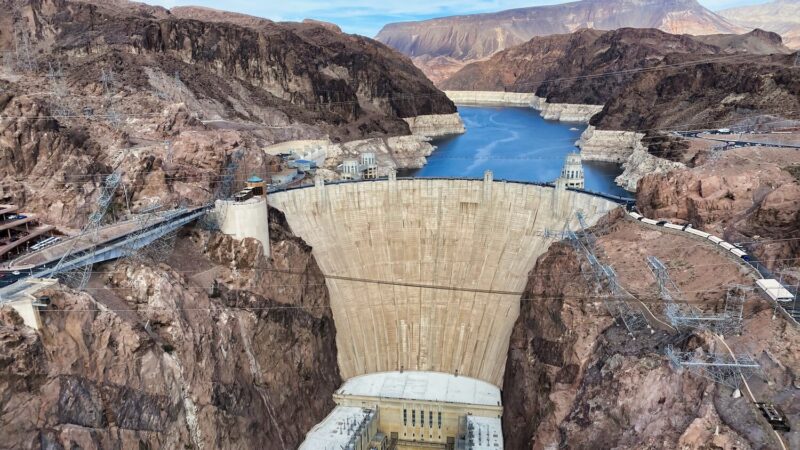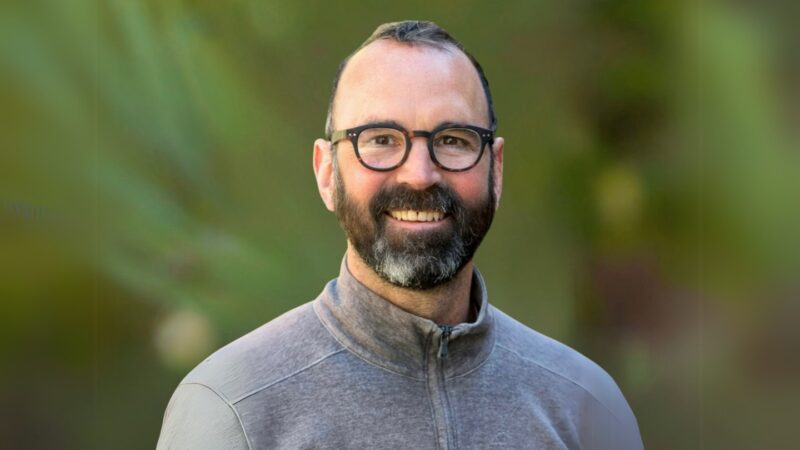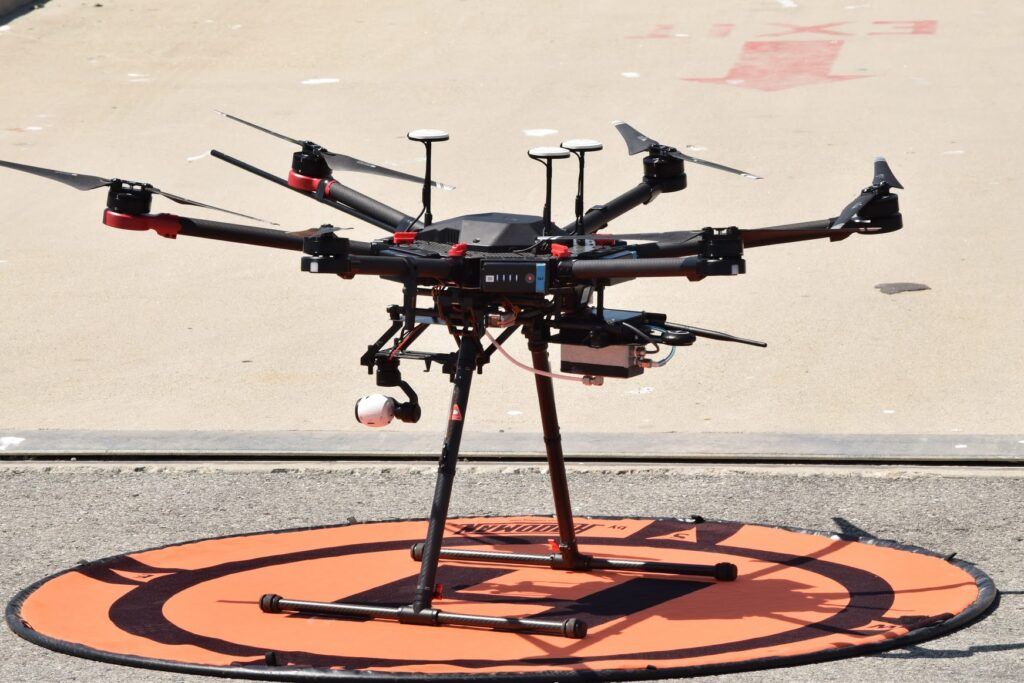
Drone monitoring of ship emissions could save lives, protect health
Students partnered with tech company on project that explored public health outcomes in L.A. and Long Beach port communities
Cargo ships bring the things people want and need to our ports. But they also bring air pollution.
And when they burn cheap, sludgy fuel, their emissions include dangerously high levels of sulfur and nitrogen oxides, which along with particulate matter, form a toxic mix that harms respiratory and circulatory health.
In 2014, state regulators passed the California Sulfur Rule, which requires ships to burn cleaner fuel within 200 nautical miles of the coast. Enforcement remains a challenge. For now, a few California Air Resources Board officers randomly check ships’ fuel at pier, a time-consuming and manpower-intensive effort that means only two ships can be inspected per day. Meanwhile, the board projects more than 6,600 cargo ships to dock per year from 2021–2032. And because cheap, illegal fuel can save hundreds of thousands of dollars per voyage, there’s powerful incentive to violate the state law and similar federal law.
But, according to a new report produced by UCLA environmental science students, technology may come to the rescue. The report notes specifically that powerful sensors mounted on industrial-scale drones that can fly in a ship’s exhaust plume to detect whether the fuel being burned is within legal limits.
The report was part of the UCLA Institute of the Environment and Sustainability senior practicum, in which small teams of students, under the guidance of faculty advisers, work on a yearlong project on behalf of clients to solve real-world problems.
“This is the kind of project that exemplifies what the Practicum does so well,” said Noah Garrison, director of the program. “It gives our students the chance to take the lead on solving serious environmental problems at local and global levels, all while learning skills from scientists and policy experts across UCLA’s broad range of research programs.”
This team partnered with the ADEPT Group, Inc., an environmentally focused tech company, to find out how drone-enhanced enforcement of the California Sulfur Rule could affect public health. They modeled outcomes for two scenarios: one in which ships were cheating at a 10% rate — a rate similar to the documented incidence of violations in European waters — and a “clean” scenario that assumed effective enforcement and full compliance. Estimates are that 20 to 25 percent of ships are in violation of current standards, according to ADEPT.
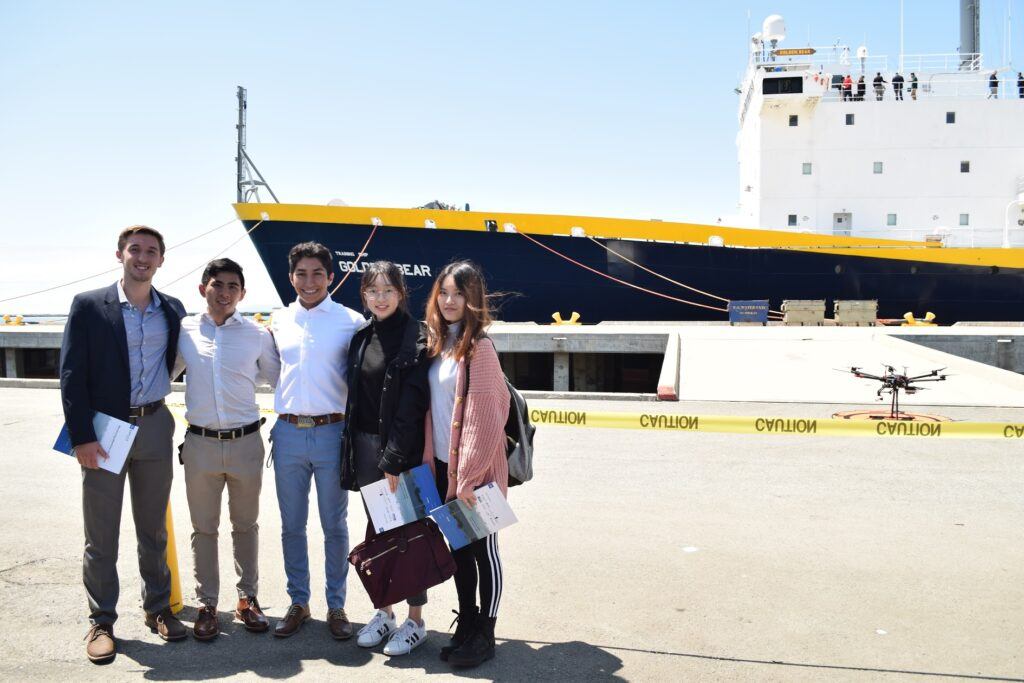
Enhanced enforcement with aerial monitoring could avoid 55 deaths due to air pollution each year in the port communities of Wilmington, Carson, West Long Beach and San Pedro, the student researchers projected. In addition to saving lives, there would also be about $600 million savings in medical costs. According to these initial findings, each year better enforcement would prevent approximately 2,600 cases of asthma and 1,200 cases of asthma morbidity, or acute attacks requiring emergency room visits or hospitalization.
“When ships burn the higher-sulfur fuel close to the coast, they’re increasing the particulate matter in the air off the coast and in communities closest to commercial ports — which are often disadvantaged,” said Ryan Hallman, a recent UCLA graduate and lead author of the research.
Another key finding was that air quality modelers who work for air quality districts with oceangoing vessels erroneously assumed ship operators’ full compliance with the California Rule. The false assumption undercounts the actual air pollution disadvantaged communities near ports must endure and prevents effective countermeasures from being taken.
They also uncovered that the ship operators’ financial motivation to cheat dwarfs the current penalties that the rule violators may have to pay in the low probability event of being caught. In court, fines have been just $7,500 to $10,000 per day in port.
A drone-mounted sensor system was demonstrated at the Port of L.A. on May 7, World Asthma Day, for a crowd of onlookers and leaders including Mary Nichols, chair of the California Air Resources Board. The six-propeller drone, piloted by Flying Lion, Inc., flew into the exhaust plume of the T. S. Golden Bear — a training ship operated by the California State University Maritime Academy.
“Enforcing anti-pollution laws at sea is difficult at best, but it’s absolutely essential to protecting the health of people in coastal communities,” said Nichols, who is also professor-in-residence at UCLA School of Law. “Whenever we find technology that holds promise to detect violations and hold the vessel owners accountable, we want to test it out.”
Access to the Golden Bear had to be approved by a number of high-ranking public officials, from port security to those in charge of the ship itself. The process took months, but the entire plume-sniffing process took less than 10 minutes from take-off to landing. More importantly, it delivered accurate results that showed the ship was burning “clean” fuel within the regulatory limits.
In addition to the public health research, students presented the technology to a variety of stakeholders, including the Port of Long Beach and a range of air quality agencies. At one meeting in San Francisco, the Bay Area Air Quality Management District committed $275,000 to co-fund a demonstration project that would test how to adapt the technologies to California’s legal, geographic, security and safety needs.
Alex Spataru, CEO of the Adept Group, Inc., said drone enforcement already pays for itself in port-heavy countries such as Norway, Singapore, Denmark and the Netherlands. In Denmark, sulfur air pollution is down 50% since aerial monitoring of ocean-going vessels was implemented five years ago.
Future UCLA student research teams will look more deeply into the sensor technology, particulate matter pollution and public health impacts. If all goes well, similar methods could be expanded to protect coastal communities along the entire west coast of the United States.
“We can cost-effectively eliminate violations with proven technologies, creating positive public health outcomes throughout California — particularly in the most vulnerable communities,” Spataru said.
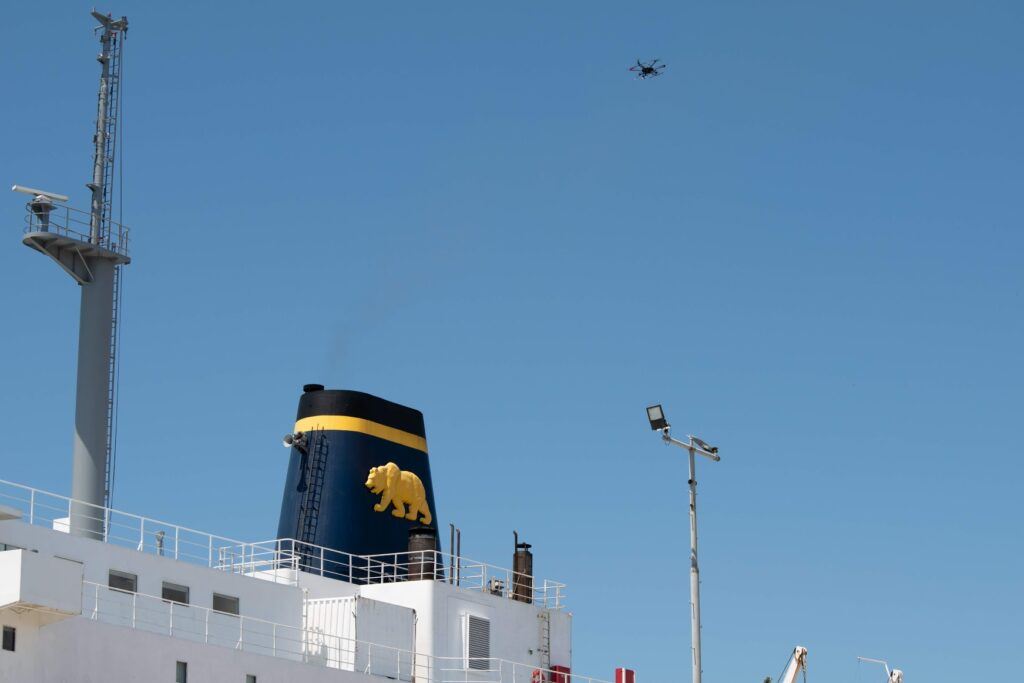
Top image: Industrial strength drone equipped with sulfur sensors for testing ship emissions. | Nicki Aviel/UCLA
Published:

